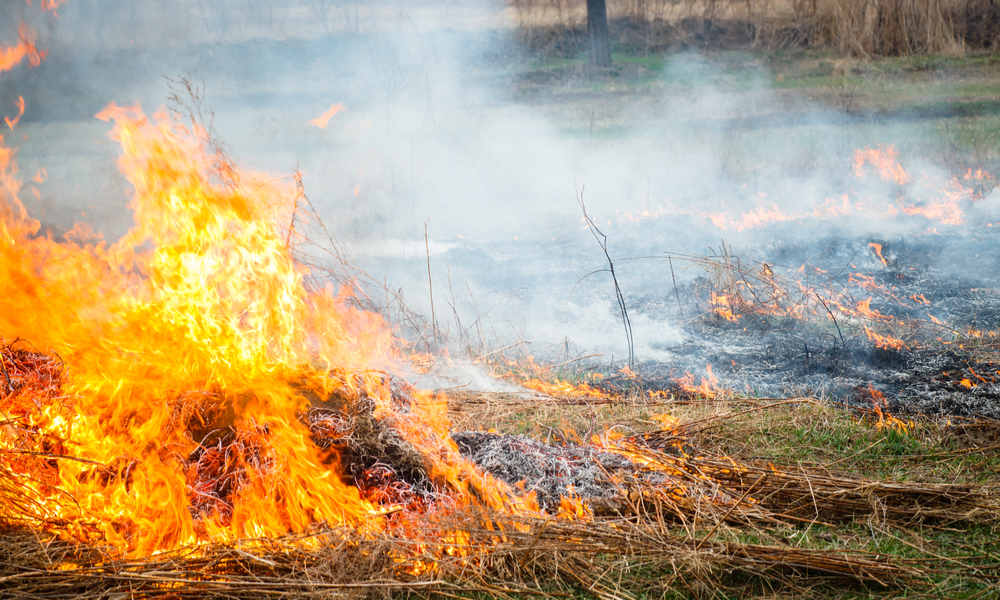California Marijuana Growers Must Navigate Wildfire Recovery
The post California Marijuana Growers Must Navigate Wildfire Recovery appeared first on High Times.
The scale and intensity of this year’s wildfire season in California left many folks around the country dumbstruck. Who can forget the hellish cell phone videos captured by morning commuters showing whole hillsides along the highways engulfed in flames? But those were Southern California’s wildfires, some 29 of them, which raged through properties and caused widespread evacuations in December. And the spectacular images from that inferno make it easy to forget that back in October, Northern California suffered its own extraordinary fire season. Damages from those fires are still being calculated, and one industry has been hit particularly hard: cannabis. The Northern California region is of course legendary for its cannabis agriculture. But now, California marijuana growers must navigate wildfire recovery. How they do so could impact the country’s largest cannabis market in significant, unpredictable ways.
California Marijuana Growers Must Navigate Wildfire Recovery
All told, Northern California’s October wildfires turned hundreds of thousands of acres to ash. They torched upwards of six thousand homes. 43 people (representing eight counties) lost their lives to the flames. These are losses from which it will take the state years to recover. Already, insurance claims are approaching the $10 billion mark.
However, little of that insurance money is going to provide a helping hand to cannabis farmers who lost everything in the fires.
For them, the tragedy of losing their pot farms are particularly piqued. Consider the timing. On January 1, California’s recreational market became fully legalized. In giddy anticipation for the dramatic spike in demand, growers had been gearing up all season for what promised to be a banner year.
And cannabis crops were at their peak when the fires raged through Mendocino and Sonoma counties—the twin hearts of cannabis agriculture in California. The flames torched more than thirty cannabis farms to the ground. Farms with millions of dollars of worth of product. In short, the fires could not have come at a worse time for the cannabis industry there.
Losing cannabis crops directly to fires, however, is only part of the story. Farms lost structures that will need rebuilding. But many cannabis farmers lost another kind of green: cash.
Federal Prohibition Makes Recovery Especially Hard For Cannabis Cultivators

The ongoing (and likely ramping up) federal ban on cannabis means California marijuana growers must navigate wildfire recovery without the financial assistance enjoyed by farmers and property-owners in other industries.
The “cash problem” has long been a concern for companies in states with legal weed. Typically, the issue is framed as one of abundance. Where and how to bank all the profits from legal sales when the federal government considers the money illicit?
After the Northern California wildfires, the “cash problem” appears in a different light, as one of scarcity. Now, cannabis cultivators can’t access the funds they need to rebuild.
For one, federally backed crop insurance isn’t available for marijuana growers. Most other farmers can take advantage of the Federal Crop Insurance Act. But not farmers who grow a plant that the federal government considers a Schedule I drug.
Nor are cannabis crops eligible for federal disaster relief or emergency assistance through the Federal Emergency Management Agency.
In November, High Times reported on the neighborly aid California farms were receiving from their counterparts in Oregon. But some farmers in California are finding themselves blocked from receiving support from some community fundraisers. One payment processor for such a fundraiser went so far as to freeze disbursement, citing a refusal to do business with cannabis companies.
Private insurance, on the other hand, is also difficult for cultivators to obtain. And even if they do have insurance, many farmers are finding their policies voided through a loophole that exempts the insurer from settling claims connected to an illegal industry.
Some insurance companies do work with cannabis growers. But the premiums are high, and many farmers don’t even know it’s a possibility.
Legal Cannabis Industry Will Feel Effects Of Fires For A Long Time
While California marijuana growers must navigate wildfire recovery, the retail sector of the industry is bracing for increased costs and a drop in supply—both in quantity and quality.
For crops that weren’t lost to the fires, a number of factors can still make harvests unusable. Many farms found their crops intact but covered in ash. Others had their harvests tainted by chemicals used to put out the fires. Lack of access also caused many crops simply to die from heat and lack of water.
Furthermore, the fires that ripped through Southern California in December have spread resources for the recovery effort thin. Financial resources have to be directed to more locations. And with building companies likewise under increasing demand, rebuilding cannabis farms could be costly and take time.
From seed to smoke, many worry that the fires and their fallout will increase prices across the industry.
As a result, many legalization advocates are pointing out that full legalization would have made California growers much less vulnerable to these kinds of disasters.
The post California Marijuana Growers Must Navigate Wildfire Recovery appeared first on High Times.


